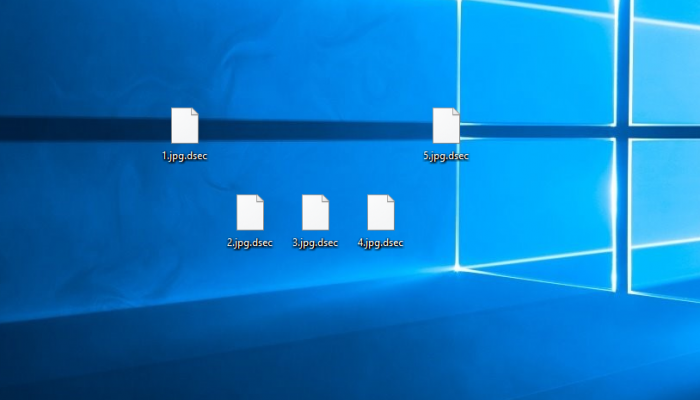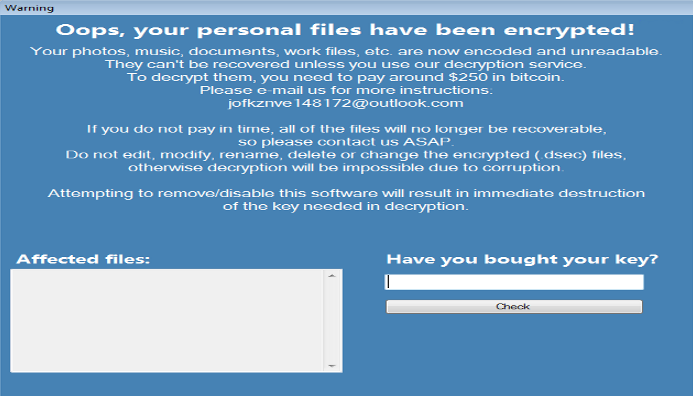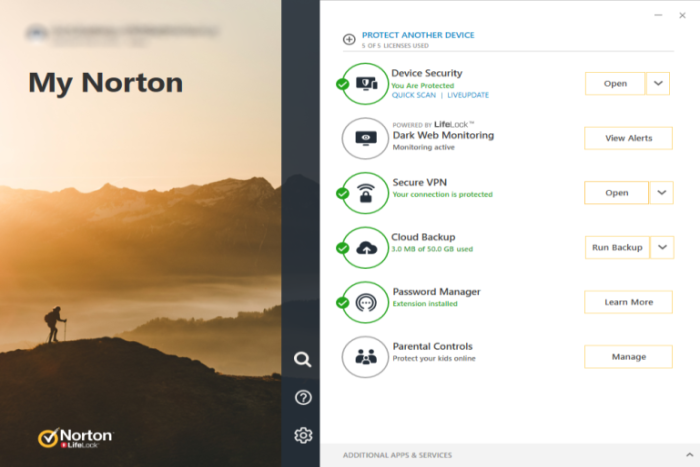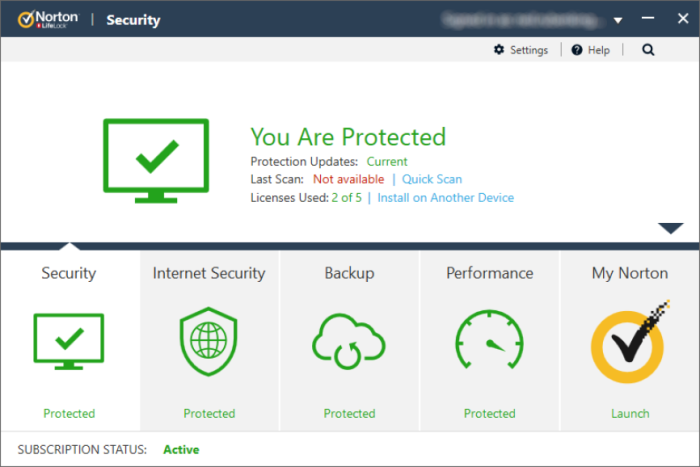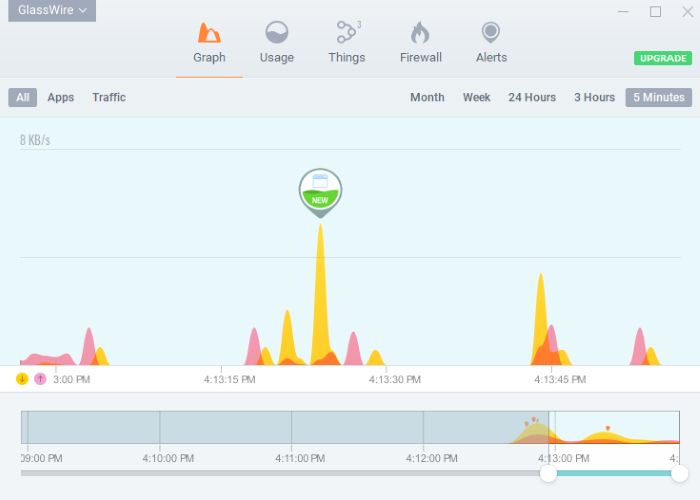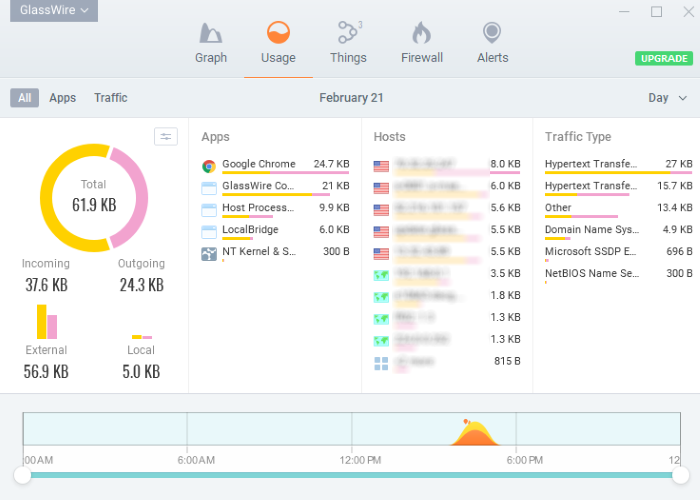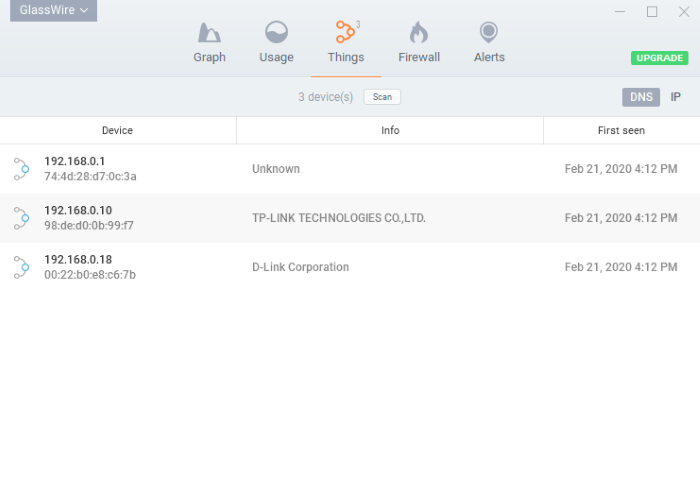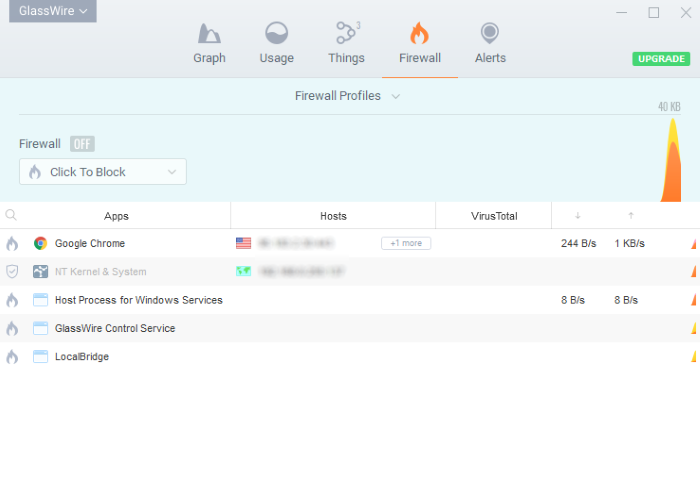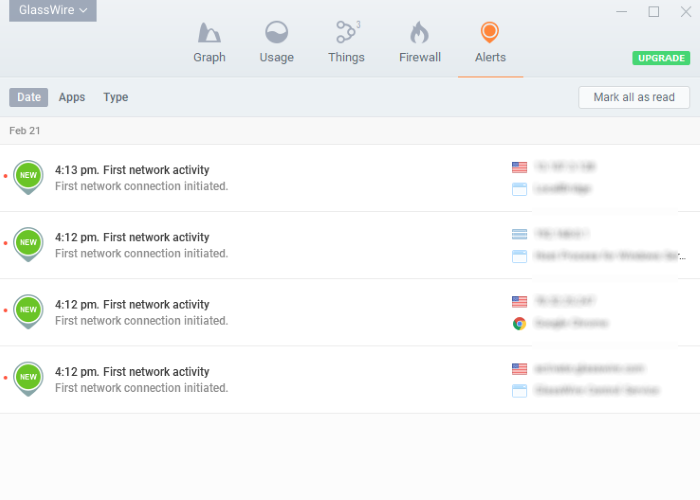What is Dsec?
Nowadays hackers widely use ransomware viruses, and it’s not a surprise. With the help of internet and computers we do a great variety of things and ransomware viruses can easily ruin your life. And Dsec ransomware is among them. This virus doesn’t belong to any already known file-encryption ransomware family, so this virus is a new one. As the rule such viruses infect computers by the means of fake installers, which are promoted as a free software or an update. However, hackers can easily inject the code of the virus into regular Microsoft Office documents and send them by email. Be aware, when such a file has been opened even in a preview, the operating system immediately executes this malicious code. At its turn the code modifies some registry keys and their values. Then it infects system processes, by the means of which the encryption happens. As the result, some of your files get new “.dsec” extension. Moreover, Dsec creates the ransom window, called “Warning”. The purpose of this window is to force victims to pay for the decryption tool. Unfortunately, it’s the surest way to recover your data. But in the most cases, hackers just ignore messages after being paid or even send another virus instead of the decryption tool. Still, there is another option. That’s why we’ve prepared the detailed guide on how to remove Dsec ransomware and decrypt “.dsec” files without paying ransoms. Check this guide for free!
Warning
Oops, your personal files have been encrypted!
Your photos, music, documents, work files, etc. are now encoded and unreadable.
They can't be recovered unless you use our decryption service.
To decrypt them, you need to pay around $250 in bitcoin.
Please e-mail us for more instructions:
jofkznve148172@outlook.com
If you do not pay in time, all of the files will no longer be recoverable, so please contact us ASAP.
Do not edit, modify, rename, delete or change the encrypted (.dsec) files, otherwise decryption will be impossible due to corruption.
Attempting to remove/disable this software will result in immediate destruction of the key needed in decryption.
Affected files:
*Names*
-Have you bought your key?
Article’s Guide
- How to remove Dsec ransomware from your computer
- Automatically remove Dsec ransomware
- Manually remove Dsec ransomware
- How to decrypt .Dsec files
- Automatically decrypt .Dsec files
- Manually decrypt .Dsec files
- How to prevent ransomware attacks
- Remove Dsec ransomware and decrypt .Dsec files with our help
How to remove Dsec ransomware from your computer?
Every day ransomware viruses change as well as their folders, executable files and the processes, which they use. For this reason it’s difficult to detect the virus yourself. That’s why we’ve prepared the detailed guide for you on how to remove Dsec ransomware from your computer!
Automatically remove Dsec ransomware
We strongly recommend you to use automated solution, as it can scan all the hard drive, ongoing processes and registry keys. It will mitigate the risks of the wrong installation and will definetely remove Dsec ransomware from your computer with all of its leftovers and register files. Moreover, it will protect your computer from future attacks.
Our choice is Norton 360 . Norton 360 scans your computer and detects various threats like Dsec virus, then removes it with all of the related malicious files, folders and malicious registry keys. Moreover, it has a great variety of other features, like protection from specific ransomware attacks, safe box for your passwords and many other things!

Manually remove Dsec ransomware
This way is not recommended, as it requires strong skills. We don’t bear any responsibility for your actions. We also warn you that you can damage your operating system or data. However, it can be a suitable solution for you.
- Open the “Task Manager”
- Right click on the “Name” column, add the “Command line”
- Find a strange process, the folder of which probably is not suitable for it
- Go To the process folder and remove all files
- Go to the Registry and remove all keys related to the process
- Go to the AppData folder and remove all strange folders, that you can find
How to decrypt .Dsec files?
Once you’ve removed the virus, you are probably thinking how to decrypt “.Dsec” files or at least restore them. Let’s take a look at possible ways of decrypting your data.
Restore .Dsec files with Stellar Data Recovery
If you decided to recover your files, we strongly advise you to use only high-quality software, otherwise your data can be corrupted. Our choice is Stellar Data Recovery. This software has proven to be very appreciated by customers, who have faced ransomware problems!

- Download and install Stellar Data Recovery
- Select drives and folders with your files, then click Scan.
- Choose all the files in a folder, then press on Restore button.
- Manage export location.
The download is an evaluation version for recovering files. To unlock all features and tools, purchase is required ($49.99-299). By clicking the button you agree to EULA and Privacy Policy. Downloading will start automatically.
Other solutions
The services we’ve mentioned in this part also guarantee users, that the encrypted data is unlikely to become damaged. But you should understand, that there is still a risk to corrupt your files.
Decrypt .Dsec files with Emsisoft decryptor
Decrypt .Dsec files with Kaspersky decryptors
Decrypt .Dsec files with Dr. Web decryptors
Decrypt .Dsec files manually
If above mentioned solutions didn’t help to decrypt .Dsec files, still, there is no need to invest in the malicious scheme by paying a ransom. You are able to recover files manually.
You can try to use one of these methods in order to restore your encrypted data manually.
Restore .Dsec files with Windows Previous Versions
- Open My Computer and search for the folders you want to restore;
- Right-click on the folder and choose Restore previous versions option;
- The option will show you the list of all the previous copies of the folder;
- Select restore date and the option you need: Open, Copy and Restore.
Restore .Dsec files with System Restore
- Type restore in the Search tool;
- Click on the result;
- Choose restore point before the infection infiltration;
- Follow the on-screen instructions.
How to prevent ransomware attacks?
If you have successfully removed Dsec ransomware, you know probably think about the ways how to protect your data from future attacks. The best way is to create backups of your data. We recommend you to use only high-quality products. Our choice here is Stellar Data Recovery. This soft can easily create highly-qualified backups, has a user friendly interface and moreover, it can help you to restore your files! Then you should take under strict control all your internet connections. Some of the ransomware viruses connect to various internet services and can even infect computers that are connected to the same local network. That’s why it’s important to use a strong firewall, that can easily restrict any connection. The best choice is GlassWire. This program has a user friendly interface and it becomes very easy to prevent any ransomware or hacker attack.

To unlock all features and tools, purchase is required ($49.99-$299). By clicking the button you agree to EULA and Privacy Policy.
If you want to learn out more details about the ways how to prevent ransomware attacks, read our detailed article!
Write us an email
If your case is an unusual one, feel free to write us an email. Fill the form below and wait for our response! We will answer you as soon as possible. The files we need to inspect your case are: executable files of the virus, if it’s possible; examples of the encrypted files; screenshots of your task manager; ransom note; background screen.
CONCLUSION: nowadays, these solutions are the all possible ways to remove Dsec ransomware and decrypt “.Dsec” files. Nowadays the best way to remove it is the Norton 360 . Their specialists improve the scan system and update the databases every day. It helps not only to remove existing problems, but also protects computers from future attacks. If there is a new way to decrypt your files, we will update the article, so stay tuned.


